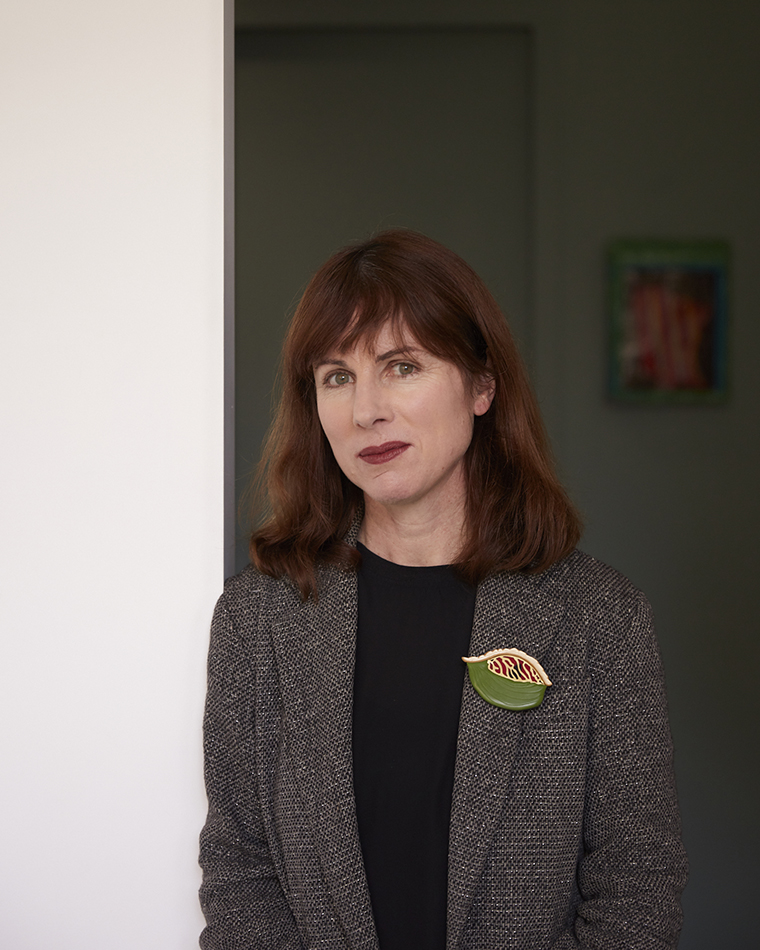Why did you open your gallery?
I viewed the undertaking as extremely risky. It was 2003 and the confluence of 3 experiences: a boss that screamed at staff in corridors; climbing at high altitude in the Himalayas; and the death of someone very close to me, gave me courage to do it. I had gained a lot of experience writing as an art critic — so that gave me reason. I started the gallery because I decided it would be more critical to be a champion than a critic.
Share a memory of working with an artist?
Last year Edith Amituanai had her first survey exhibition at the Adam Art Gallery at Victoria University. She and I were asked to go to Wellington one Sunday morning to give a talk to the Adam patrons. I grew up near the University campus and going there to talk about art made in West Auckland had a certain irony. Edith and I have been working together since 2003, when I opened the gallery. Since that time her work has been on a trajectory that shows no sign of slowing. From a socially-focused photography, steeped in the documentary tradition, she has evolved a photographically-focused social practice. She uses the camera as an instrument of relationship building. Her work is well understood in the communities she moves in, but it took a University gallery rather than a public gallery to recognise it in this way. We had fun talking to the patrons that morning. I told them how Edith mentioned she was going to get married. I hadn’t been showing her work long, but we were doing quite well. Edith Sagopolu had a certain following . . . I asked nervously, ‘Are you going to change your name?’ Edith ended up giving her new name, Mrs Amituanai, to her exhibition at the gallery after she got married. Edith made me laugh at my earlier self. She said in the early days I had the complete expectation that the phone would ring off the hook.
Why collect?
Collecting involves genuine, unstoppable interest in the views of others that causes you to get to know more about your own way of looking at the world. It is a creative activity that is deeply personal. Collectors and appreciators have reasons for doing what they do that are as diverse as the reasons artists have for doing what they do. The decision to acquire art is not like any other consumer decision, it is a form of being alive.
What is art for?
I am writing this in the time of Covid19. For the first time in 16 years I have postponed an exhibition (Kate Small’s Welcome to Holland was due to open three days after lockdown). I quoted a Peter Schjeldahl article on Morandi in the text for Kate’s exhibition*. There is a phrase in the article that I keep thinking about: ‘permanent emergency’. Schjeldahl says that for Morandi, ‘tiny slippages between eye and hand — constituted for him, a permanent emergency, requiring incessant adjustment.’
Life, as lockdown makes clear, requires incessant adjustment. Art seems to me the furniture of our interior lives; t connects us with the perspective of others, provides pleasure and joy, relief from loneliness. It may also prepare us for a life of incessant adjustment. I teach students at AUT and we often discuss the painter and critic, Jeremy Gilbert-Rolfe’s essay, ‘Seriousness and Difficulty in Art Criticism’. In a passage about ‘the aesthetic dimension of everyday life’ he puts forward the idea that the work of art is, ‘at the very least a kind of training ground for the very idea of difficulty, a kind of unserious zone where the serious might be properly considered as a form, difficulty turned into a game’. Being home in this way, art, music, writing, the last light on the tree in the cemetery out my window, are more vital than ever.
